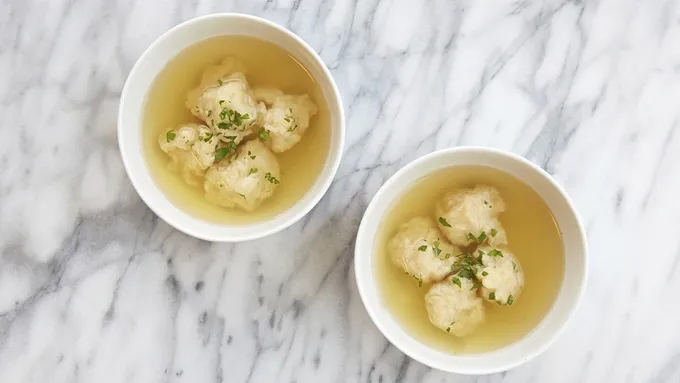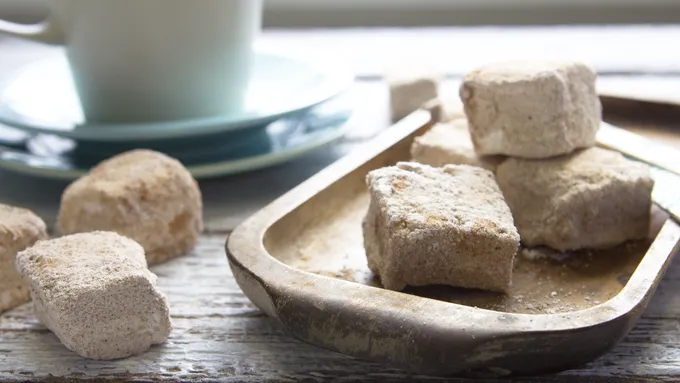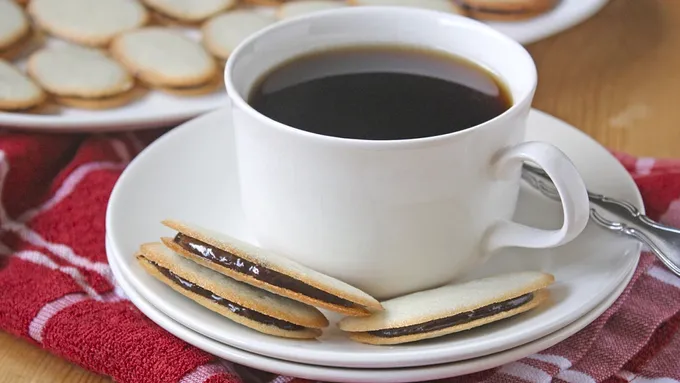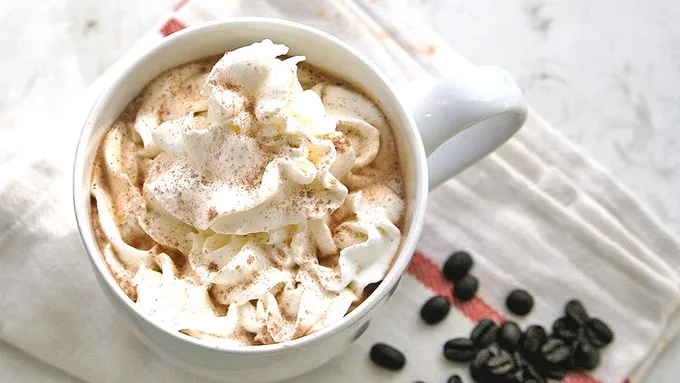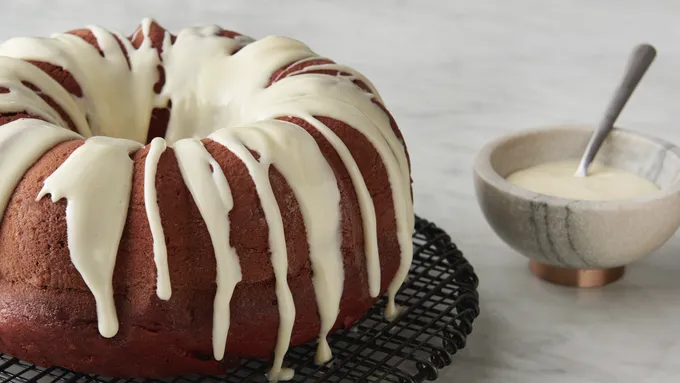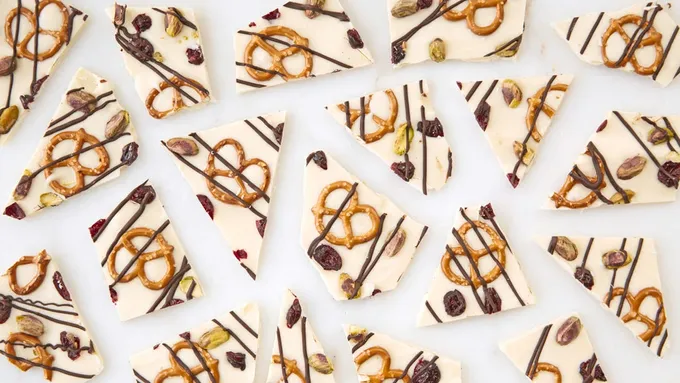(function() {
document.addEventListener('DOMContentLoaded', function() {
var componentMetadata = JSON.parse('\x7b\x22componentName\x22\x3a\x22ActionToolbar_54a65093-280d-4b2a-8a72-d13833164a15\x22,\x22deferOptions\x22\x3a\x7b\x22deferComponent\x22\x3afalse,\x22deferType\x22\x3a\x22None\x22,\x22deferId\x22\x3a\x22ra93a243602f54b3a966bba9b5698b91f\x22,\x22deferredContainerId\x22\x3a\x22\x2fmain\x2frdpRecipeDetailToolbar\x22,\x22deferredContainerView\x22\x3anull\x7d,\x22viewName\x22\x3a\x22ActionToolbar\x22\x7d');
var configuration = {"contentId":"2db5624c-940f-41a9-b66f-f4be29660c57","toolbarSettings":{"id":"54a65093-280d-4b2a-8a72-d13833164a15","registrationUrl":"/GMI/CoreSites/BC/Home/register/reg-fp","regAction":"FAVORITE","eSourceCode":11275,"namePassedToEvents":"RDPToolbar_LOWER","buttons":[{"addFavoriteErrorMessage":"Sorry, something went wrong. Please save again.","removeFavoriteErrorMessage":"Error occurred while removing from favorites","registrationUrl":"/GMI/CoreSites/BC/Home/register/reg-fp","regAction":"FAVORITE","eSourceCode":11275,"isCurrentUserAnonymous":false,"isFavoriteItem":false,"id":"718b4e01-b2be-40cf-8f0c-bca3b01db0ed","allowedForAnonymousUsers":false,"type":"Favorite","displayName":"Save","toggleDisplayName":"Saved","namePassedToEvents":"Favorite","cssClassName":"atButtonFavorite","privacyOptOutMessage":"\u003cdiv class=\u0027privacyMessage\u0027\u003e\n\u003ch3\u003eThis feature is not available with your current cookie settings.\u003c/h3\u003e\n\u003cp\u003eYou can \u003ca href=\u0027#\u0027 data-show-preference-center=\u00271\u0027\u003eupdate your privacy settings\u003c/a\u003e to enable this content. Please enable “Functional Cookies” to use this feature.\u003c/p\u003e\n\u003c/div\u003e","showPrivacyOptOutMessage":false},{"nestedButtons":[{"providerName":"pinterest","providerNamePassedToEvents":"Pinterest","shareUrlFormat":"//pinterest.com/pin/create/link/?url={0}","id":"585d4198-c691-4eae-bb63-66cc1927e44a","allowedForAnonymousUsers":true,"type":"Social","displayName":"Save To Pinterest","toggleDisplayName":"","namePassedToEvents":"Pinterest","cssClassName":"atButtonPinterest","privacyOptOutMessage":"\u003cdiv class=\u0027privacyMessage\u0027\u003e\n\u003ch3\u003eThis feature is not available with your current cookie settings.\u003c/h3\u003e\n\u003cp\u003eYou can \u003ca href=\u0027#\u0027 data-show-preference-center=\u00271\u0027\u003eupdate your privacy settings\u003c/a\u003e to enable this content. Please enable “Functional Cookies” to use this feature.\u003c/p\u003e\n\u003c/div\u003e","showPrivacyOptOutMessage":false},{"templateId":"95752b5c-7e75-4367-bca7-fdd3abb0ebcb","dialogHeading":"Email Recipe","emailCode":"TBSP_ContentEmail","dialogSettings":{"cancelButtonText":"Cancel","copyToSenderLabel":"Send a Copy to Myself","emailAddressesLabel":"* Email Address(es)","emailInstructionText":"Separate email addresses with commas","fromText":"From:","privacyPolicyText":"\u003cp\u003e\u0026copy;2025 General Mills, Inc. All Rights Reserved. This information will only be used to send an email to your friend(s) and will not be saved. Please read our \u003ca rel=\u0022noopener noreferrer\u0022 rel=\u0022noopener noreferrer\u0022 href=\u0022http://www.generalmills.com/company/privacy-policies/privacy-policy-us\u0022 target=\u0022_blank\u0022 shape=\u0022rect\u0022\u003ePrivacy Policy\u003c/a\u003e.\u003c/p\u003e","requiredFieldText":"* Required","sendButtonText":"Send","senderEmailAddressLabel":"* Your Email Address","senderFirstNameLabel":"* Your First Name","sendToText":"Send To:"},"id":"fad236f8-3084-4a50-bc7d-283bc5511677","allowedForAnonymousUsers":true,"type":"Email","displayName":"Share via Email","toggleDisplayName":"","namePassedToEvents":"Email","cssClassName":"atButtonEmail","privacyOptOutMessage":"\u003cdiv class=\u0027privacyMessage\u0027\u003e\n\u003ch3\u003eThis feature is not available with your current cookie settings.\u003c/h3\u003e\n\u003cp\u003eYou can \u003ca href=\u0027#\u0027 data-show-preference-center=\u00271\u0027\u003eupdate your privacy settings\u003c/a\u003e to enable this content. Please enable “Functional Cookies” to use this feature.\u003c/p\u003e\n\u003c/div\u003e","showPrivacyOptOutMessage":false},{"providerName":"facebook","providerNamePassedToEvents":"Facebook","shareUrlFormat":"//facebook.com/sharer/sharer.php?u={0}","id":"fc7a5260-abb4-42be-958a-d172ba87442b","allowedForAnonymousUsers":true,"type":"Social","displayName":"Share on Facebook","toggleDisplayName":"","namePassedToEvents":"Facebook","cssClassName":"atButtonFacebook","privacyOptOutMessage":"\u003cdiv class=\u0027privacyMessage\u0027\u003e\n\u003ch3\u003eThis feature is not available with your current cookie settings.\u003c/h3\u003e\n\u003cp\u003eYou can \u003ca href=\u0027#\u0027 data-show-preference-center=\u00271\u0027\u003eupdate your privacy settings\u003c/a\u003e to enable this content. Please enable “Functional Cookies” to use this feature.\u003c/p\u003e\n\u003c/div\u003e","showPrivacyOptOutMessage":false},{"successMessage":"Copied.","errorMessage":"Press Ctrl+C and Enter to copy to clipboard","successMessageDuration":3000,"errorMessageDuration":10000,"id":"263303a9-5fe6-480d-910a-608f153d379a","allowedForAnonymousUsers":true,"type":"CopyLink","displayName":"Copy Link","toggleDisplayName":"","namePassedToEvents":"Copy","cssClassName":"atButtonCopyLink","privacyOptOutMessage":"\u003cdiv class=\u0027privacyMessage\u0027\u003e\n\u003ch3\u003eThis feature is not available with your current cookie settings.\u003c/h3\u003e\n\u003cp\u003eYou can \u003ca href=\u0027#\u0027 data-show-preference-center=\u00271\u0027\u003eupdate your privacy settings\u003c/a\u003e to enable this content. Please enable “Functional Cookies” to use this feature.\u003c/p\u003e\n\u003c/div\u003e","showPrivacyOptOutMessage":false}],"id":"46a2d62f-b80c-49bf-969f-5d28640dc94a","allowedForAnonymousUsers":true,"type":"Reveal","displayName":"Share","toggleDisplayName":"","namePassedToEvents":"Share","cssClassName":"atButtonReveal","privacyOptOutMessage":"\u003cdiv class=\u0027privacyMessage\u0027\u003e\n\u003ch3\u003eThis feature is not available with your current cookie settings.\u003c/h3\u003e\n\u003cp\u003eYou can \u003ca href=\u0027#\u0027 data-show-preference-center=\u00271\u0027\u003eupdate your privacy settings\u003c/a\u003e to enable this content. Please enable “Functional Cookies” to use this feature.\u003c/p\u003e\n\u003c/div\u003e","showPrivacyOptOutMessage":false},{"layoutParameter":"p%3d1","id":"ab4bf4fc-919a-4252-81ca-c39edb8eadf0","allowedForAnonymousUsers":true,"type":"Print","displayName":"Print","toggleDisplayName":"","namePassedToEvents":"Print","cssClassName":"atButtonPrint","privacyOptOutMessage":"\u003cdiv class=\u0027privacyMessage\u0027\u003e\n\u003ch3\u003eThis feature is not available with your current cookie settings.\u003c/h3\u003e\n\u003cp\u003eYou can \u003ca href=\u0027#\u0027 data-show-preference-center=\u00271\u0027\u003eupdate your privacy settings\u003c/a\u003e to enable this content. Please enable “Functional Cookies” to use this feature.\u003c/p\u003e\n\u003c/div\u003e","showPrivacyOptOutMessage":false},{"errorMessage":"","id":"0a1bab6c-f930-4359-b8b4-a72470a4d8ee","allowedForAnonymousUsers":true,"type":"WakeLock","displayName":"Keep Screen On","toggleDisplayName":"","namePassedToEvents":"Wakelock","cssClassName":"","privacyOptOutMessage":"\u003cdiv class=\u0027privacyMessage\u0027\u003e\n\u003ch3\u003eThis feature is not available with your current cookie settings.\u003c/h3\u003e\n\u003cp\u003eYou can \u003ca href=\u0027#\u0027 data-show-preference-center=\u00271\u0027\u003eupdate your privacy settings\u003c/a\u003e to enable this content. Please enable “Functional Cookies” to use this feature.\u003c/p\u003e\n\u003c/div\u003e","showPrivacyOptOutMessage":false}],"isSticky":true},"userSettings":{"isCurrentUserAnonymous":true,"isFavoriteItem":false,"isAnonymousUserWithFavorites":false},"pageAttributes":{"url":"https%3a%2f%2fwww.tablespoon.com%2frecipes%2feasy-homemade-modeling-chocolate%2f2db5624c-940f-41a9-b66f-f4be29660c57","contentId":"2db5624c-940f-41a9-b66f-f4be29660c57"},"recaptchaPublicKey":"6LfW_icUAAAAAL_CG700pddUxLNYIxgRJe3vOg2Z"};
var moduleName = 'actionToolbar';
var isVueModule = true;
GeneralMills.PandoSites.RegisterControlInstance(moduleName, configuration, componentMetadata, isVueModule)
});
})();
Ingredients
-
16
oz chocolate
-
1/3
to 2/3 cup corn syrup
-
Candy coloring (optional)
(function() {
document.addEventListener('DOMContentLoaded', function() {
var componentMetadata = JSON.parse('\x7b\x22componentName\x22\x3a\x22RecipeIngredients_a2352866-1a21-4a5d-9dd4-1744f7700fb5\x22,\x22deferOptions\x22\x3a\x7b\x22deferComponent\x22\x3afalse,\x22deferType\x22\x3a\x22None\x22,\x22deferId\x22\x3a\x22ra0f0cd1e382c45d8a38f84805127d167\x22,\x22deferredContainerId\x22\x3a\x22\x2fmain\x2frdpIngredients\x22,\x22deferredContainerView\x22\x3anull\x7d,\x22viewName\x22\x3a\x22RecipeIngredients\x22\x7d');
var configuration = {};
var moduleName = 'recipeIngredients';
var isVueModule = false;
GeneralMills.PandoSites.RegisterControlInstance(moduleName, configuration, componentMetadata, isVueModule)
});
})();
(function() {
document.addEventListener('DOMContentLoaded', function() {
var componentMetadata = JSON.parse('\x7b\x22componentName\x22\x3a\x22DoubleClick_745c15b5-a9ad-4519-81b8-8ce6135efb93\x22,\x22deferOptions\x22\x3a\x7b\x22deferComponent\x22\x3atrue,\x22deferType\x22\x3a\x22OnDemand\x22,\x22deferId\x22\x3a\x22r7ce3045e9d7d40ce999e117663e35c95\x22,\x22deferredContainerId\x22\x3a\x22\x2fmain\x2frdpSecondaryAd\x22,\x22deferredContainerView\x22\x3a\x22DoubleClick\x22\x7d,\x22viewName\x22\x3a\x22DoubleClick\x22\x7d');
var configuration = {"adId":"OMP/tablespoon/recipes/300x250_bottom","minPageWidth":"1000","maxPageWidth":"9999","defaultMinPageWidth":"1000","defaultMaxPageWidth":"9999","size":"[[300,600],[300,250]]","refreshWhenViewed":false,"adContainerId":"3e49c0e9-2270-4d1c-9ca4-69a83bc1d898","doubleClickAdContainerId":"2eae9fc3-e6c0-4548-8a49-06579539110c","adCaptionText":"Advertisement","networkCode":"/15704463/","relevantMetadata":[null,null],"privacyOptOut":false,"isThirdPartyProvider":true,"thirdPartyTag":"\u003cdiv align=\u0022center\u0022 data-freestar-ad=\u0022__300x600\u0022 id=\u0022aee678a9ab7884c2fae79cf8e57150b7f\u0022 data-placement-name=\u0022tablespoon-com_right_rail_1\u0022\u003e\u003c/div\u003e","sovrnCssClass":"","responsive":true,"contentType":"Recipe","itemId":"2db5624c-940f-41a9-b66f-f4be29660c57","continuesBelowText":"Recipe Continues Below"};
var moduleName = 'thirdPartyProvider';
var isVueModule = true;
GeneralMills.PandoSites.RegisterControlInstance(moduleName, configuration, componentMetadata, isVueModule)
});
})();
-
Melt chocolate, either in a double boiler or microwave. Allow chocolate to cool to 90-91°F, stirring often as it cools.
-
Start by adding 1/3 cup corn syrup to milk or white chocolate and 1/2 cup corn syrup to dark chocolate. Stir just to incorporate the corn syrup.
-
Pour out onto a cold surface like a granite countertop or marble cutting board. You can also use a baking sheet. Knead the modeling chocolate, adding small amounts of corn syrup if needed, until soft and pliable.
-
Let the modeling chocolate rest for 15 minutes before using it to sculpt figures, cut shapes or cover a cake. You can also add coloring, if desired. Wear food handling gloves and knead in the coloring.
-
Wrap any extra modeling chocolate tightly in plastic wrap, then seal in a zip top bag. Store at room temperature for up to two months.
(function() {
document.addEventListener('DOMContentLoaded', function() {
var componentMetadata = JSON.parse('\x7b\x22componentName\x22\x3a\x22RecipeSteps_a2352866-1a21-4a5d-9dd4-1744f7700fb5\x22,\x22deferOptions\x22\x3a\x7b\x22deferComponent\x22\x3atrue,\x22deferType\x22\x3a\x22OnDemand\x22,\x22deferId\x22\x3a\x22r7cd9e0ef69d9411cbe108e5dbc5f6fcb\x22,\x22deferredContainerId\x22\x3a\x22\x2fmain\x2frdpSteps\x22,\x22deferredContainerView\x22\x3a\x22RecipeDetailRedesign\x22\x7d,\x22viewName\x22\x3a\x22RecipeSteps\x22\x7d');
var configuration = {"initAreImagesHidden":false,"hideImagesEventName":"HideStepShots","showImagesEventName":"ShowStepShots","hideImagesButtonText":"Hide Images","showImagesButtonText":"Show Images","hideImagesClass":"rdpHideStepImages"};
var moduleName = 'recipeStepShots';
var isVueModule = true;
GeneralMills.PandoSites.RegisterControlInstance(moduleName, configuration, componentMetadata, isVueModule)
});
})();
No nutrition information available for this recipe
(function() {
document.addEventListener('DOMContentLoaded', function() {
var componentMetadata = JSON.parse('\x7b\x22componentName\x22\x3a\x22RecipeNutritionNonPrintRedesign_a2352866-1a21-4a5d-9dd4-1744f7700fb5\x22,\x22deferOptions\x22\x3a\x7b\x22deferComponent\x22\x3atrue,\x22deferType\x22\x3a\x22Simple\x22,\x22deferId\x22\x3a\x22rf20e8f6169e04556becc9f722cea68e2\x22,\x22deferredContainerId\x22\x3a\x22\x2fmain\x2frdpNutrition\x22,\x22deferredContainerView\x22\x3a\x22RecipeDetailRedesign\x22\x7d,\x22viewName\x22\x3a\x22RecipeNutritionNonPrintRedesign\x22\x7d');
var configuration = {"initIsExpanded":false,"expandEventName":"NutritionExpand","collapseEventName":"NutritionCollapse"};
var moduleName = 'recipeNutrition';
var isVueModule = true;
GeneralMills.PandoSites.RegisterControlInstance(moduleName, configuration, componentMetadata, isVueModule)
});
})();
Expert Tips
{{tipItemHeadingFormat.replace('{0}',props.index + 1)}}
(function() {
document.addEventListener('DOMContentLoaded', function() {
var componentMetadata = JSON.parse('\x7b\x22componentName\x22\x3a\x22RecipeTipsCarousel_a2352866-1a21-4a5d-9dd4-1744f7700fb5\x22,\x22deferOptions\x22\x3a\x7b\x22deferComponent\x22\x3atrue,\x22deferType\x22\x3a\x22Simple\x22,\x22deferId\x22\x3a\x22r2bef10b3928848ce8880306a814ac7dc\x22,\x22deferredContainerId\x22\x3a\x22\x2fmain\x2frdpTips\x22,\x22deferredContainerView\x22\x3a\x22RecipeDetailRedesign\x22\x7d,\x22viewName\x22\x3a\x22RecipeTipsCarousel\x22\x7d');
var configuration = {"title":"Easy Homemade Modeling Chocolate","introduction":"Turn any type of chocolate into a soft, flexible homemade modeling chocolate that can be used to decorate cakes, cupcakes, cookies and more. All you need is some corn syrup and your favorite chocolate to get started.","servingSize":"1 Serving","image":{"small":{"media":"(min-width: 0px)","src":"https://mojo.generalmills.com/api/public/content/DU-c0rhWZUaooki1EgC3Fg_webp_base.webp?v=ac182d7f\u0026t=e724eca7b3c24a8aaa6e089ed9e611fd"},"medium":{"media":"(min-width: 500px)","src":"https://mojo.generalmills.com/api/public/content/DU-c0rhWZUaooki1EgC3Fg_webp_base.webp?v=ac182d7f\u0026t=191ddcab8d1c415fa10fa00a14351227"},"large":{"media":"(min-width: 767px)","src":"https://mojo.generalmills.com/api/public/content/DU-c0rhWZUaooki1EgC3Fg_webp_base.webp?v=ac182d7f\u0026t=191ddcab8d1c415fa10fa00a14351227"},"alt":"Easy Homemade Modeling Chocolate"},"contributor":{"label":"by:","name":"Hungry Happenings","profileUrl":"/contributors/hungry-happenings","displayDate":{"label":"Updated","date":"Apr 9, 2020"}},"ingredientGroups":[{"ingredients":[{"quantity":"16","description":"oz chocolate"},{"quantity":"1/3","description":"to 2/3 cup corn syrup"},{"quantity":"","description":"Candy coloring (optional)"}]}],"steps":[{"description":"Melt chocolate, either in a double boiler or microwave. Allow chocolate to cool to 90-91°F, stirring often as it cools."},{"description":"Start by adding 1/3 cup corn syrup to milk or white chocolate and 1/2 cup corn syrup to dark chocolate. Stir just to incorporate the corn syrup.","stepShotImageUrl":"//mojo.generalmills.com/api/public/content/egUCscPpREWZjoOnZtT-Ug_webp_base.webp?v=6e7c76ea\u0026t=3653fe2f5ecd4a47a5a51c97e429947c"},{"description":"Pour out onto a cold surface like a granite countertop or marble cutting board. You can also use a baking sheet. Knead the modeling chocolate, adding small amounts of corn syrup if needed, until soft and pliable.","stepShotImageUrl":"//mojo.generalmills.com/api/public/content/wFn7MPFr-0S91ty4QOUd2g_webp_base.webp?v=2698cb51\u0026t=3653fe2f5ecd4a47a5a51c97e429947c"},{"description":"Let the modeling chocolate rest for 15 minutes before using it to sculpt figures, cut shapes or cover a cake. You can also add coloring, if desired. Wear food handling gloves and knead in the coloring.","stepShotImageUrl":"//mojo.generalmills.com/api/public/content/itRhge2R6kueThz3KGN2Ag_webp_base.webp?v=12a59883\u0026t=3653fe2f5ecd4a47a5a51c97e429947c"},{"description":"Wrap any extra modeling chocolate tightly in plastic wrap, then seal in a zip top bag. Store at room temperature for up to two months."}],"tips":[{"title":"","description":"Making your own modeling chocolate is so easy, soon you\u0027ll be decorating your desserts like a pro! Modeling chocolate, also known as chocolate clay, is easy to make and fun to use to create decorations for cakes, cupcakes, cookies and more. Once you learn the basic techniques for making modeling chocolate, you can use it just like you would fondant. If you love the look of fondant but hate the taste, modeling chocolate is a perfect alternative. I always suggest starting with less corn syrup and adding more as needed until you get a pliable modeling chocolate.","category":"Editorial","tipShots":[]},{"title":"","description":"You can use any type of chocolate to make your homemade modeling chocolate, including pure semi-sweet, bittersweet, milk, or white chocolate, which all contain cocoa butter. Or you can use dark, light or white confectionery coating, candy melts or almond bark, which all contain some sort of oil.","category":"Recipe/Ingredient Facts","tipShots":[]},{"title":"","description":"Every type and brand of chocolate contains varying amounts of cocoa butter or oil, which makes giving an exact recipe for modeling chocolate a bit tricky. In general, dark chocolate is more solid than milk or white chocolate and will require more corn syrup. Confectionery coatings are also softer than pure chocolates and may require less corn syrup.","category":"Recipe/Ingredient Facts","tipShots":[]},{"title":"","description":"If you use the microwave to melt your chocolate, add your chocolate to a microwave-safe bowl and heat on high power for short bursts of time. Every microwave is different, so adjust as needed. Generally speaking, you can heat 16 oz. of chocolate on high power for 30 seconds, remove and stir, heat for another 30 seconds, then let the bowl sit in the microwave for a moment, remove and stir. Heat at 10-15 second increments, allowing it to sit for a moment before stirring vigorously. You want to allow the heat from the chocolate to melt the remaining pieces. This will keep your chocolate from getting too hot. If you try to move too quickly, you can easily burn it. And there\u0027s nothing you can do with burnt chocolate, aside from tossing it in the trash!","category":"Recipe/Ingredient Facts","tipShots":[]},{"title":"","description":"Is your modeling chocolate greasy? You may have added the corn syrup while the chocolate was too hot. It is very important to allow the chocolate to cool to a temperature of 90-91º, stirring often as it cools so it doesn\u0027t harden around the edges of the bowl.","category":"Recipe/Ingredient Facts","tipShots":[]},{"title":"","description":"Don\u0027t have a thermometer? Put a drop of chocolate on your lip. You want it to feel slightly cool.","category":"Recipe/Ingredient Facts","tipShots":[]},{"title":"","description":"Incorporate the corn syrup slowly to the chocolate, stirring slowly, until well combined. The chocolate will start to harden almost immediately. You need to make sure the corn syrup is mixed in, but if you mix it too vigorously at this point, again, you may get greasy modeling chocolate.","category":"Recipe/Ingredient Facts","tipShots":[]},{"title":"","description":"After being stored, the modeling chocolate will harden. It\u0027s best to break off small pieces and knead them until soft and pliable enough to sculpt, using the warmth from your hands to make the chocolate pliable again. Dark chocolate will harden much more than milk or white. If it is just too hard to knead, you can heat it on the defrost setting in your microwave. Work slowly, breaking off pieces and heating them for 5 seconds at a time, kneading between each heating session. If you overheat the chocolate, you\u0027ll end up with greasy modeling chocolate. If during the process of heating it back up, you see that a spot looks greasy, let it sit and cool for about ten minutes before kneading it.","category":"Recipe/Ingredient Facts","tipShots":[]},{"title":"","description":"The recipe is Kitchens Tested.","category":"Kitchen Tested","tipShots":[]}],"kitchenTips":[{"title":"","description":"You can use any type of chocolate to make your homemade modeling chocolate, including pure semi-sweet, bittersweet, milk, or white chocolate, which all contain cocoa butter. Or you can use dark, light or white confectionery coating, candy melts or almond bark, which all contain some sort of oil.","category":"Recipe/Ingredient Facts","tipShots":[]},{"title":"","description":"Every type and brand of chocolate contains varying amounts of cocoa butter or oil, which makes giving an exact recipe for modeling chocolate a bit tricky. In general, dark chocolate is more solid than milk or white chocolate and will require more corn syrup. Confectionery coatings are also softer than pure chocolates and may require less corn syrup.","category":"Recipe/Ingredient Facts","tipShots":[]},{"title":"","description":"If you use the microwave to melt your chocolate, add your chocolate to a microwave-safe bowl and heat on high power for short bursts of time. Every microwave is different, so adjust as needed. Generally speaking, you can heat 16 oz. of chocolate on high power for 30 seconds, remove and stir, heat for another 30 seconds, then let the bowl sit in the microwave for a moment, remove and stir. Heat at 10-15 second increments, allowing it to sit for a moment before stirring vigorously. You want to allow the heat from the chocolate to melt the remaining pieces. This will keep your chocolate from getting too hot. If you try to move too quickly, you can easily burn it. And there\u0027s nothing you can do with burnt chocolate, aside from tossing it in the trash!","category":"Recipe/Ingredient Facts","tipShots":[]},{"title":"","description":"Is your modeling chocolate greasy? You may have added the corn syrup while the chocolate was too hot. It is very important to allow the chocolate to cool to a temperature of 90-91º, stirring often as it cools so it doesn\u0027t harden around the edges of the bowl.","category":"Recipe/Ingredient Facts","tipShots":[]},{"title":"","description":"Don\u0027t have a thermometer? Put a drop of chocolate on your lip. You want it to feel slightly cool.","category":"Recipe/Ingredient Facts","tipShots":[]},{"title":"","description":"Incorporate the corn syrup slowly to the chocolate, stirring slowly, until well combined. The chocolate will start to harden almost immediately. You need to make sure the corn syrup is mixed in, but if you mix it too vigorously at this point, again, you may get greasy modeling chocolate.","category":"Recipe/Ingredient Facts","tipShots":[]},{"title":"","description":"After being stored, the modeling chocolate will harden. It\u0027s best to break off small pieces and knead them until soft and pliable enough to sculpt, using the warmth from your hands to make the chocolate pliable again. Dark chocolate will harden much more than milk or white. If it is just too hard to knead, you can heat it on the defrost setting in your microwave. Work slowly, breaking off pieces and heating them for 5 seconds at a time, kneading between each heating session. If you overheat the chocolate, you\u0027ll end up with greasy modeling chocolate. If during the process of heating it back up, you see that a spot looks greasy, let it sit and cool for about ten minutes before kneading it.","category":"Recipe/Ingredient Facts","tipShots":[]}],"additionalContent":[],"faq":[],"tipCategories":[{"categoryName":"Editorial","heading":"More About This Recipe","cssClass":"recipePartStory","expandOnInit":false,"expandText":"More +","collapseText":"Less -","expandEventName":"","collapseEventName":"","image":"","tips":[{"title":"","description":"Making your own modeling chocolate is so easy, soon you\u0027ll be decorating your desserts like a pro! Modeling chocolate, also known as chocolate clay, is easy to make and fun to use to create decorations for cakes, cupcakes, cookies and more. Once you learn the basic techniques for making modeling chocolate, you can use it just like you would fondant. If you love the look of fondant but hate the taste, modeling chocolate is a perfect alternative. I always suggest starting with less corn syrup and adding more as needed until you get a pliable modeling chocolate.","category":"Editorial","tipShots":[]}],"isExpandable":false},{"categoryName":"Kitchen Tested","heading":"More About This Recipe","cssClass":"recipePartStory","expandOnInit":false,"expandText":"More +","collapseText":"Less -","expandEventName":"","collapseEventName":"","image":"","tips":[{"title":"","description":"The recipe is Kitchens Tested.","category":"Kitchen Tested","tipShots":[]}],"isExpandable":false}],"nutritionInfo":{"configuration":{"showAsTable":false,"noNutritionInformationAvailableMessage":"No nutrition information available for this recipe","poweredByText":"\u003cp\u003eNutrition information for this recipe is estimated using a leading nutrition calculation application, but is an estimate only. Actual nutrition values will vary based on the exact ingredients or brands you may use.\u003c/p\u003e\n\u003ca href=\u0022http://developer.edamam.com\u0022\u003ePowered By \u003cimg src=\u0022-/media/ABEEFB1BF16C40AEB5775A3BE02315EA.ashx\u0022 alt=\u0022Edamam\u0022 /\u003e\u003c/a\u003e","nutritionChartTitle":"Nutrition Facts","nutritionInformationLabel":"Nutrition","servingSizeText":"Serving Size:","dailyValuesDisclaimer":"*Percent Daily Values are based on a 2,000 calorie diet.","percentDailyValueText":"% Daily Value","percentDailyValueFooterTitleText":"% Daily Value*:","exchangeInformationTitleText":"Exchanges:","nutritionFactsExpandText":"More Nutrition","nutritionFactsCollapseText":"Less Nutrition"},"servingSize":"1 Serving","exchangeInfo":"Free","showPoweredBy":false,"showRecipeTotalTime":true,"showRecipePrepTime":true,"showCarbohydrateChoices":false},"trademarks":[],"labels":{"ingredientsHeader":"Ingredients","stepsHeader":"Instructions","stepsImageHideText":"Hide Images","stepsImageShowText":"Show Images","stepNumberText":"Step","faqHeader":"Frequently Asked Questions","tipsHeader":"Expert Tips","tipItemHeadingFormat":"tip {0}","postedBy":"by:","copyright":"© {yyyy} ®/TM General Mills All Rights Reserved","showDrawerText":"Show","hideDrawerText":"Hide","expandDescriptionText":"More +","collapseDescriptionText":"Less -","includeScrollIndicator":false},"primaryAttributes":[{"label":"Prep Time","values":[{"text":"15","label":"min"}]},{"label":"Total","values":[{"text":"30","label":"min"}]},{"label":"Servings","values":[{"text":"1"}]},{"label":"Ingredients","values":[{"text":"3"}]}],"secondaryAttributes":[],"badges":[{"badgeType":3,"badgeText":"","label":"Kitchen Tested","imageUrl":"/-/media/GMI/Core-Sites/TBSP/Images/Shared/RecipeParts/KitchenTested_TBSP1.jpg?sc_lang=en","linkUrl":"/about-us/kitchen-tested","metaDataTags":[],"showMemberInfo":false,"matchedMetadataId":"00000000-0000-0000-0000-000000000000"}],"backgroundImageUrl":"","breadcrumbs":{"links":[{"url":"/","label":"Home"},{"url":"/recipes","label":"Recipes"}],"currentPageName":"Easy Homemade Modeling Chocolate"}};
var moduleName = 'recipeTipsCarousel';
var isVueModule = true;
GeneralMills.PandoSites.RegisterControlInstance(moduleName, configuration, componentMetadata, isVueModule)
});
})();
(function() {
document.addEventListener('DOMContentLoaded', function() {
var componentMetadata = JSON.parse('\x7b\x22componentName\x22\x3a\x22DoubleClick_80e5634b-4b8b-4ab6-9d42-f87399323043\x22,\x22deferOptions\x22\x3a\x7b\x22deferComponent\x22\x3atrue,\x22deferType\x22\x3a\x22OnDemand\x22,\x22deferId\x22\x3a\x22r7782a8b86ff143fca784a9d532447c86\x22,\x22deferredContainerId\x22\x3a\x22\x2fmain\x2frdpSecondaryAdMobile\x22,\x22deferredContainerView\x22\x3a\x22DoubleClick\x22\x7d,\x22viewName\x22\x3a\x22DoubleClick\x22\x7d');
var configuration = {"adId":"OMP/m_tablespoon/recipes/300x250_bottom","minPageWidth":"299","maxPageWidth":"767","defaultMinPageWidth":"1000","defaultMaxPageWidth":"9999","size":"[[300,250], [300,600]]","refreshWhenViewed":false,"adContainerId":"0ccc1608-4ab8-4ffb-91e0-2c9784fba5d8","doubleClickAdContainerId":"75323d1c-0648-489f-bb27-6fd37c2febf4","adCaptionText":"Advertisement","networkCode":"/15704463/","relevantMetadata":[null,null],"privacyOptOut":false,"isThirdPartyProvider":true,"thirdPartyTag":"\u003cdiv align=\u0022center\u0022 data-freestar-ad=\u0022__300x250 __336x280\u0022 id=\u0022a9dd344449cc84bc19d7a659fe8fa0b5e\u0022 data-placement-name=\u0022tablespoon-com_content_standard\u0022\u003e\u003c/div\u003e","sovrnCssClass":"","responsive":true,"contentType":"Recipe","itemId":"2db5624c-940f-41a9-b66f-f4be29660c57","continuesBelowText":"Recipe Continues Below"};
var moduleName = 'thirdPartyProvider';
var isVueModule = true;
GeneralMills.PandoSites.RegisterControlInstance(moduleName, configuration, componentMetadata, isVueModule)
});
})();
(function() {
document.addEventListener('DOMContentLoaded', function() {
var componentMetadata = JSON.parse('\x7b\x22componentName\x22\x3a\x22RelatedContent_86838426-dd26-481a-9735-69435bca607d\x22,\x22deferOptions\x22\x3a\x7b\x22deferComponent\x22\x3afalse,\x22deferType\x22\x3a\x22None\x22,\x22deferId\x22\x3a\x22r96ff2ab45524450db091f4c45cb7c7e1\x22,\x22deferredContainerId\x22\x3a\x22\x2fmain\x2frdpRelatedContent1_NonDeferred\x22,\x22deferredContainerView\x22\x3anull\x7d,\x22viewName\x22\x3a\x22RelatedContent\x22\x7d');
var configuration = {"dataSourceId":"86838426-dd26-481a-9735-69435bca607d","isCurrentUserAnonymous":true,"isAnonymousUserWithFavorites":false,"relatedContentList":{"contentId":"2db5624c-940f-41a9-b66f-f4be29660c57","listSettings":{"pageSize":3,"startPage":1,"listType":1,"title":"Try These Next","useModalRegistration":false,"regAction":"","esrcCode":0,"favoriteButtonLabelFormat":"Add {0} to favorites","contentTypes":["Category"],"showImages":false,"imageSize":0,"showRatings":false,"allowFavoriting":false,"cssClassName":"relatedContentWithoutImages","favoriteButtonText":""},"items":[{"contentId":"e01f3855-325a-4dc6-884b-a71a0fb7ddcb","contentType":"Category","title":"Chocolate Cake","isFavorite":false,"linkUrl":"/courses/dessert/cake/chocolate-cake","numberOfRatings":"0","averageRating":"0","averageRatingStars":"0","smallImageUrl":"","mediumImageUrl":""},{"contentId":"524828d2-c1f0-4402-8316-c63c973f9645","contentType":"Category","title":"Chocolate Pie","isFavorite":false,"linkUrl":"/courses/dessert/pie/chocolate","numberOfRatings":"0","averageRating":"0","averageRatingStars":"0","smallImageUrl":"","mediumImageUrl":""},{"contentId":"4e2439d9-073f-4844-9c01-9dc0fbe0e9e3","contentType":"Category","title":"Chocolate Bars","isFavorite":false,"linkUrl":"/courses/dessert/bar/chocolate-bars","numberOfRatings":"0","averageRating":"0","averageRatingStars":"0","smallImageUrl":"","mediumImageUrl":""}],"availableItems":[{"contentId":"e01f3855-325a-4dc6-884b-a71a0fb7ddcb","contentType":"Category","title":"Chocolate Cake","isFavorite":false,"linkUrl":"/courses/dessert/cake/chocolate-cake","numberOfRatings":"0","averageRating":"0","averageRatingStars":"0","smallImageUrl":"","mediumImageUrl":""},{"contentId":"524828d2-c1f0-4402-8316-c63c973f9645","contentType":"Category","title":"Chocolate Pie","isFavorite":false,"linkUrl":"/courses/dessert/pie/chocolate","numberOfRatings":"0","averageRating":"0","averageRatingStars":"0","smallImageUrl":"","mediumImageUrl":""},{"contentId":"4e2439d9-073f-4844-9c01-9dc0fbe0e9e3","contentType":"Category","title":"Chocolate Bars","isFavorite":false,"linkUrl":"/courses/dessert/bar/chocolate-bars","numberOfRatings":"0","averageRating":"0","averageRatingStars":"0","smallImageUrl":"","mediumImageUrl":""}]}};
var moduleName = 'relatedContent';
var isVueModule = true;
GeneralMills.PandoSites.RegisterControlInstance(moduleName, configuration, componentMetadata, isVueModule)
});
})();
(function() {
document.addEventListener('DOMContentLoaded', function() {
var componentMetadata = JSON.parse('\x7b\x22componentName\x22\x3a\x22RelatedContent_9930dad2-817c-4363-b508-21f459b3c521\x22,\x22deferOptions\x22\x3a\x7b\x22deferComponent\x22\x3atrue,\x22deferType\x22\x3a\x22OnDemand\x22,\x22deferId\x22\x3a\x22r3094c659d7a34cd58e9b155955497c8b\x22,\x22deferredContainerId\x22\x3a\x22\x2fmain\x2frdpRelatedContent1\x22,\x22deferredContainerView\x22\x3a\x22RecipeDetailRedesign\x22\x7d,\x22viewName\x22\x3a\x22RelatedContent\x22\x7d');
var configuration = {"dataSourceId":"9930dad2-817c-4363-b508-21f459b3c521","isCurrentUserAnonymous":true,"isAnonymousUserWithFavorites":false,"relatedContentList":{"contentId":"2db5624c-940f-41a9-b66f-f4be29660c57","listSettings":{"pageSize":6,"startPage":1,"listType":1,"title":"","useModalRegistration":false,"regAction":"","esrcCode":0,"favoriteButtonLabelFormat":"Add {0} to favorites","contentTypes":[],"showImages":true,"imageSize":1,"showRatings":false,"allowFavoriting":true,"cssClassName":"","favoriteButtonText":"Save"},"items":[{"contentId":"b8a05d8c-3a07-4588-b78e-41fc5c0508e8","contentType":"Recipe","title":"Easy Homemade Dumplings","isFavorite":false,"linkUrl":"/recipes/easy-homemade-dumplings/b8a05d8c-3a07-4588-b78e-41fc5c0508e8","numberOfRatings":"0","averageRating":"0","averageRatingStars":"0","smallImageUrl":"//mojo.generalmills.com/api/public/content/ca_ozHP6dUKD-THIzeHekw_webp_base.webp?v=164b5055\u0026t=67e847e026fb43aa8d6e3f5ef39a4ef7","mediumImageUrl":"//mojo.generalmills.com/api/public/content/ca_ozHP6dUKD-THIzeHekw_webp_base.webp?v=164b5055\u0026t=3653fe2f5ecd4a47a5a51c97e429947c"},{"contentId":"89ea73be-9256-418d-a6bf-bc1b419ca172","contentType":"Recipe","title":"Homemade Snickerdoodle Marshmallows","isFavorite":false,"linkUrl":"/recipes/homemade-snickerdoodle-marshmallows/89ea73be-9256-418d-a6bf-bc1b419ca172","numberOfRatings":"0","averageRating":"0","averageRatingStars":"0","smallImageUrl":"//mojo.generalmills.com/api/public/content/nUt1698tbkSYxlJfJY8sdg_webp_base.webp?v=72607326\u0026t=67e847e026fb43aa8d6e3f5ef39a4ef7","mediumImageUrl":"//mojo.generalmills.com/api/public/content/nUt1698tbkSYxlJfJY8sdg_webp_base.webp?v=72607326\u0026t=3653fe2f5ecd4a47a5a51c97e429947c"},{"contentId":"07c2e047-1f20-48b7-8736-cc059d824c1b","contentType":"Recipe","title":"Homemade Milano Cookies","isFavorite":false,"linkUrl":"/recipes/homemade-milano-cookies/07c2e047-1f20-48b7-8736-cc059d824c1b","numberOfRatings":"0","averageRating":"0","averageRatingStars":"0","smallImageUrl":"//mojo.generalmills.com/api/public/content/grPpRp4BekupsnSigLOjig_webp_base.webp?v=d0425d42\u0026t=67e847e026fb43aa8d6e3f5ef39a4ef7","mediumImageUrl":"//mojo.generalmills.com/api/public/content/grPpRp4BekupsnSigLOjig_webp_base.webp?v=d0425d42\u0026t=3653fe2f5ecd4a47a5a51c97e429947c"},{"contentId":"2759a7d4-6a4e-43e6-93b3-afb993a9e900","contentType":"Recipe","title":"Easy Mocha Latte","isFavorite":false,"linkUrl":"/recipes/easy-mocha-latte/2759a7d4-6a4e-43e6-93b3-afb993a9e900","numberOfRatings":"0","averageRating":"0","averageRatingStars":"0","smallImageUrl":"//mojo.generalmills.com/api/public/content/yYRvZajpkECqX_rzxk_2Yg_webp_base.webp?v=b9af3c74\u0026t=67e847e026fb43aa8d6e3f5ef39a4ef7","mediumImageUrl":"//mojo.generalmills.com/api/public/content/yYRvZajpkECqX_rzxk_2Yg_webp_base.webp?v=b9af3c74\u0026t=3653fe2f5ecd4a47a5a51c97e429947c"},{"contentId":"4ee44d92-f08a-4e52-9bea-a1cb947b05d3","contentType":"Recipe","title":"Easy Red Velvet Pound Cake","isFavorite":false,"linkUrl":"/recipes/easy-red-velvet-pound-cake/4ee44d92-f08a-4e52-9bea-a1cb947b05d3","numberOfRatings":"0","averageRating":"0","averageRatingStars":"0","smallImageUrl":"//mojo.generalmills.com/api/public/content/N0ZzQQj5bkGREuKzEYXQLw_webp_base.webp?v=f139ca66\u0026t=67e847e026fb43aa8d6e3f5ef39a4ef7","mediumImageUrl":"//mojo.generalmills.com/api/public/content/N0ZzQQj5bkGREuKzEYXQLw_webp_base.webp?v=f139ca66\u0026t=3653fe2f5ecd4a47a5a51c97e429947c"},{"contentId":"04bf80d6-59da-48c2-8e33-13d39c1a1ef4","contentType":"Recipe","title":"Easy Christmas Party Bark","isFavorite":false,"linkUrl":"/recipes/easy-christmas-party-bark/04bf80d6-59da-48c2-8e33-13d39c1a1ef4","numberOfRatings":"0","averageRating":"0","averageRatingStars":"0","smallImageUrl":"//mojo.generalmills.com/api/public/content/lFAkgDOZJECflAGfrE02_A_webp_base.webp?v=8b4c5d33\u0026t=67e847e026fb43aa8d6e3f5ef39a4ef7","mediumImageUrl":"//mojo.generalmills.com/api/public/content/lFAkgDOZJECflAGfrE02_A_webp_base.webp?v=8b4c5d33\u0026t=3653fe2f5ecd4a47a5a51c97e429947c"}],"availableItems":[{"contentId":"b8a05d8c-3a07-4588-b78e-41fc5c0508e8","contentType":"Recipe","title":"Easy Homemade Dumplings","isFavorite":false,"linkUrl":"/recipes/easy-homemade-dumplings/b8a05d8c-3a07-4588-b78e-41fc5c0508e8","numberOfRatings":"0","averageRating":"0","averageRatingStars":"0","smallImageUrl":"//mojo.generalmills.com/api/public/content/ca_ozHP6dUKD-THIzeHekw_webp_base.webp?v=164b5055\u0026t=67e847e026fb43aa8d6e3f5ef39a4ef7","mediumImageUrl":"//mojo.generalmills.com/api/public/content/ca_ozHP6dUKD-THIzeHekw_webp_base.webp?v=164b5055\u0026t=3653fe2f5ecd4a47a5a51c97e429947c"},{"contentId":"89ea73be-9256-418d-a6bf-bc1b419ca172","contentType":"Recipe","title":"Homemade Snickerdoodle Marshmallows","isFavorite":false,"linkUrl":"/recipes/homemade-snickerdoodle-marshmallows/89ea73be-9256-418d-a6bf-bc1b419ca172","numberOfRatings":"0","averageRating":"0","averageRatingStars":"0","smallImageUrl":"//mojo.generalmills.com/api/public/content/nUt1698tbkSYxlJfJY8sdg_webp_base.webp?v=72607326\u0026t=67e847e026fb43aa8d6e3f5ef39a4ef7","mediumImageUrl":"//mojo.generalmills.com/api/public/content/nUt1698tbkSYxlJfJY8sdg_webp_base.webp?v=72607326\u0026t=3653fe2f5ecd4a47a5a51c97e429947c"},{"contentId":"07c2e047-1f20-48b7-8736-cc059d824c1b","contentType":"Recipe","title":"Homemade Milano Cookies","isFavorite":false,"linkUrl":"/recipes/homemade-milano-cookies/07c2e047-1f20-48b7-8736-cc059d824c1b","numberOfRatings":"0","averageRating":"0","averageRatingStars":"0","smallImageUrl":"//mojo.generalmills.com/api/public/content/grPpRp4BekupsnSigLOjig_webp_base.webp?v=d0425d42\u0026t=67e847e026fb43aa8d6e3f5ef39a4ef7","mediumImageUrl":"//mojo.generalmills.com/api/public/content/grPpRp4BekupsnSigLOjig_webp_base.webp?v=d0425d42\u0026t=3653fe2f5ecd4a47a5a51c97e429947c"},{"contentId":"2759a7d4-6a4e-43e6-93b3-afb993a9e900","contentType":"Recipe","title":"Easy Mocha Latte","isFavorite":false,"linkUrl":"/recipes/easy-mocha-latte/2759a7d4-6a4e-43e6-93b3-afb993a9e900","numberOfRatings":"0","averageRating":"0","averageRatingStars":"0","smallImageUrl":"//mojo.generalmills.com/api/public/content/yYRvZajpkECqX_rzxk_2Yg_webp_base.webp?v=b9af3c74\u0026t=67e847e026fb43aa8d6e3f5ef39a4ef7","mediumImageUrl":"//mojo.generalmills.com/api/public/content/yYRvZajpkECqX_rzxk_2Yg_webp_base.webp?v=b9af3c74\u0026t=3653fe2f5ecd4a47a5a51c97e429947c"},{"contentId":"4ee44d92-f08a-4e52-9bea-a1cb947b05d3","contentType":"Recipe","title":"Easy Red Velvet Pound Cake","isFavorite":false,"linkUrl":"/recipes/easy-red-velvet-pound-cake/4ee44d92-f08a-4e52-9bea-a1cb947b05d3","numberOfRatings":"0","averageRating":"0","averageRatingStars":"0","smallImageUrl":"//mojo.generalmills.com/api/public/content/N0ZzQQj5bkGREuKzEYXQLw_webp_base.webp?v=f139ca66\u0026t=67e847e026fb43aa8d6e3f5ef39a4ef7","mediumImageUrl":"//mojo.generalmills.com/api/public/content/N0ZzQQj5bkGREuKzEYXQLw_webp_base.webp?v=f139ca66\u0026t=3653fe2f5ecd4a47a5a51c97e429947c"},{"contentId":"04bf80d6-59da-48c2-8e33-13d39c1a1ef4","contentType":"Recipe","title":"Easy Christmas Party Bark","isFavorite":false,"linkUrl":"/recipes/easy-christmas-party-bark/04bf80d6-59da-48c2-8e33-13d39c1a1ef4","numberOfRatings":"0","averageRating":"0","averageRatingStars":"0","smallImageUrl":"//mojo.generalmills.com/api/public/content/lFAkgDOZJECflAGfrE02_A_webp_base.webp?v=8b4c5d33\u0026t=67e847e026fb43aa8d6e3f5ef39a4ef7","mediumImageUrl":"//mojo.generalmills.com/api/public/content/lFAkgDOZJECflAGfrE02_A_webp_base.webp?v=8b4c5d33\u0026t=3653fe2f5ecd4a47a5a51c97e429947c"}]}};
var moduleName = 'relatedContent';
var isVueModule = true;
GeneralMills.PandoSites.RegisterControlInstance(moduleName, configuration, componentMetadata, isVueModule)
});
})();
© 2025 ®/TM General Mills All Rights Reserved
(function() {
document.addEventListener('DOMContentLoaded', function() {
var componentMetadata = JSON.parse('\x7b\x22componentName\x22\x3a\x22DoubleClick_34589d2e-66d8-4e9a-9c4f-fb0e3ab39458\x22,\x22deferOptions\x22\x3a\x7b\x22deferComponent\x22\x3atrue,\x22deferType\x22\x3a\x22OnDemand\x22,\x22deferId\x22\x3a\x22rbc5716d1240b4df8b810ff6b39dd955a\x22,\x22deferredContainerId\x22\x3a\x22\x2fmain\x2frdpTernaryAd\x22,\x22deferredContainerView\x22\x3a\x22DoubleClick\x22\x7d,\x22viewName\x22\x3a\x22DoubleClick\x22\x7d');
var configuration = {"adId":"OMP/tablespoon/recipes/300x250_bottom2","minPageWidth":"1000","maxPageWidth":"9999","defaultMinPageWidth":"1000","defaultMaxPageWidth":"9999","size":"[[300,600],[300,250]]","refreshWhenViewed":false,"adContainerId":"50f5302d-57da-4b8b-ad37-109693a0ef3e","doubleClickAdContainerId":"0bbdc00d-2fd0-42db-9f58-9573fca2f609","adCaptionText":"Advertisement","networkCode":"/15704463/","relevantMetadata":[null,null],"privacyOptOut":false,"isThirdPartyProvider":true,"thirdPartyTag":"\u003cdiv align=\u0022center\u0022 data-freestar-ad=\u0022__300x600\u0022 id=\u0022a59200e17dabf4ea1bf01cd0b993a0c33\u0022 data-placement-name=\u0022tablespoon-com_right_rail_1\u0022\u003e\u003c/div\u003e","sovrnCssClass":"","responsive":true,"contentType":"Recipe","itemId":"2db5624c-940f-41a9-b66f-f4be29660c57","continuesBelowText":"Recipe Continues Below"};
var moduleName = 'thirdPartyProvider';
var isVueModule = true;
GeneralMills.PandoSites.RegisterControlInstance(moduleName, configuration, componentMetadata, isVueModule)
});
})();
![]()
![]()
![]()





